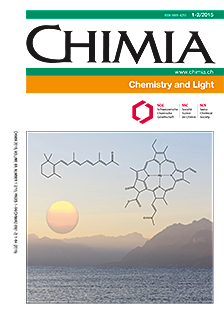Light in Medicine: The Interplay of Chemistry and Light
DOI:
https://doi.org/10.2533/chimia.2015.10Keywords:
Apoptosis, Autophagy, Photodynamic therapy, Reactive oxygen species, Wound healingAbstract
Photodynamic therapy (PDT) has had mixed reception in the clinic, with most success stories being based on the ablative capacity of PDT. In these applications, maximal combinations of light and an exogenous photosensitiser are used to generate high levels of reactive oxygen species (ROS) that induce cell death either directly via necrosis or indirectly via vascular damage. However, recent advances in understanding the complex role of ROS in cell signalling have revealed potential new applications for PDT. For example, the proliferative effects of low level ROS could be applied to wound healing or immunomodulation. These effects should also be considered in the ablative applications. With the decades of chemical advances for ablative PDT at hand – including targeting mechanisms to diseased cells and subcellular locations, optimisation of light absorption, and carrier mechanisms that modulate the therapeutic response – the application of PDT to other types of treatment could be relatively rapid. This review serves to summarise some of these developments and suggest future directions.Downloads
Published
2015-02-25
How to Cite
[1]
C. S. Allardyce, R. Bays, N. Thévenaz, Chimia 2015, 69, 10, DOI: 10.2533/chimia.2015.10.
Issue
Section
Scientific Articles
License
Copyright (c) 2015 Swiss Chemical Society

This work is licensed under a Creative Commons Attribution-NonCommercial 4.0 International License.







